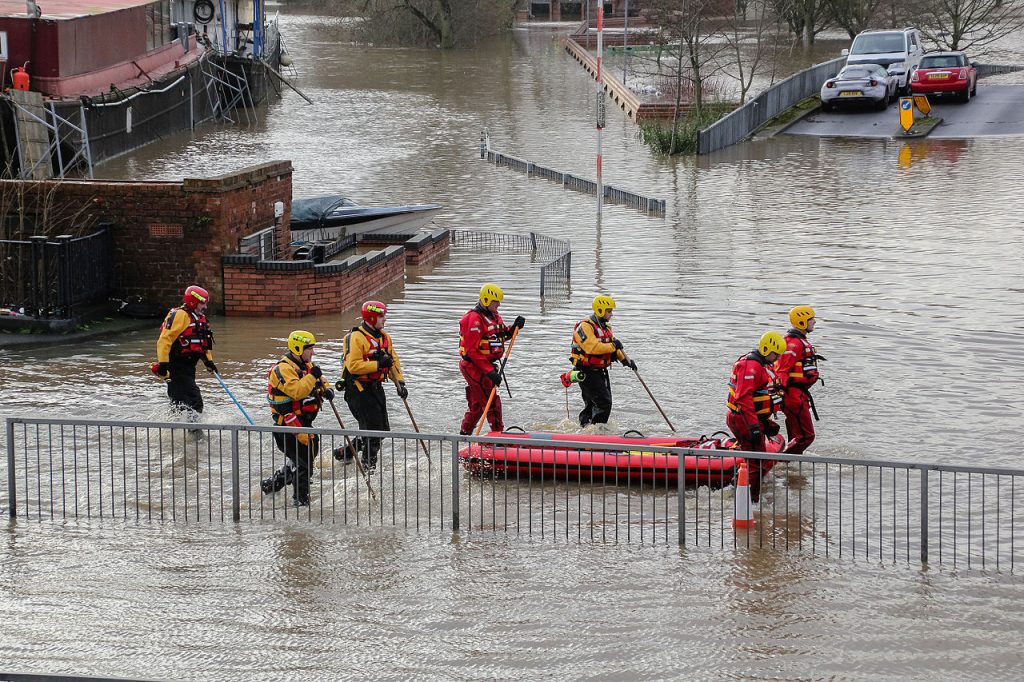Europe and North America should brace for heavy rains as global warming ushers in extreme events
Extreme rain events in most regions of the world will increase in intensity due to rising temperatures. North America, Europe and parts of Asia will see the largest increases in intensity but the Mediterranean, South Africa and Australia should also be prepared for serious rainfalls.
Extreme rain events will become more common as temperatures continue to rise, specialists from MIT warn. According to their predictions, North America, Europe and parts of Asia will experience the most significant increase but regions in the Mediterranean, South Africa and Australia will also be affected by the weather changes.
The new research from MIT and the Swiss Federal Institute of Technology in Zurich predicts that the most extreme rain events in most regions of the world will increase in intensity by 3 to 15 percent, depending on the region, for every degree Celsius that the planet warms. The study was prompted by the fact that while at a global level there are indications about the increase in extreme weather due to climate change, information on small areas, which could prove to be essential, has been lacking behind.
“The observations are telling us there will be increases at almost all latitudes, but if you want to know what’s going to happen at the scale of a continent or smaller, it’s a much more difficult question,” says Paul O’Gorman, a co-author on the paper and associate professor of atmospheric science in MIT’s Department of Earth, Atmospheric and Planetary Sciences in a MIT article.
Current climate models show an average increase in temperature of 4 degrees Celsius over the next century due to CO2 emissions and in these conditions, scientists say that North America and Europe should brace themselves for an uptake in extreme rain events. If the models hold true, the two regions will face a 25 percent increase in the intensity of rainfalls. But North America and Europe are not alone, parts of Asia will also be affected, especially the monsoon region.
The Mediterranean, South Africa and Australia will also be impacted but the research argues that the increase in intensity will be less severe than in other regions.
While some parts of the world will battle the effects of heavy rainfalls, MIT researchers argue that the few regions that are projected to experience a decrease in extreme rainfall as the world warms are mostly located over subtropical oceans that lie just outside the tropical, equatorial belt.
“It’s kind of striking,” O’Gorman says. “Almost everywhere, there’s an increase in precipitation extremes, except for these ocean regions.”
This decrease could be due to the fact that as the world gets warmer, the tropics are actually expanding. Climatologists have warned that we are going towards an age with a much wider tropical belt as the climate from the equator is spreading towards the poles. The subtropical regions are the firsts to feel the impact of this change.
Authorities can better prepare for extreme weather

Looking at the data, the study, published in the journal Nature Climate Change, it can be deduced that the rise in intensity will be caused by changes in the strength of local wind patterns.
“As a region warms due to human-induced emissions of carbon dioxide, winds loft that warm, moisture-laden air up through the atmosphere, where it condenses and rains back down to the surface. But changes in the strength of the local winds also influence the intensity of a region’s most extreme rainstorms,” the study states.
Authors of the study say that these findings could help local authorities brace for the extreme weather and adapt to changing patterns as it allows for a region-by-region analysis. This will be particularly important to prevent loss of life and protect properties in case of flooding.
“There is interest around the world in the question of whether to adjust codes to adapt to a changing climate and precipitation, particularly for flooding,” says O’Gorman. “We found there are regional variations in the projected precipitation response because of changes in winds, and of course if you’re interested in the impacts of precipitation extremes, you’d want to know what’s happening in your region.”
The scientists used data from the Coupled Model Intercomparison Project Phase 5, which aggregates outputs, or predictions, made by different climate models, for everything from local air pressure to the thickness of sea ice in response to changing the climate.
They looked at information about daily accumulated surface precipitation and temperature, vertical wind velocity and pressure, and daily atmospheric humidity and these outputs were simulated by 22 climate models, for the years 1950 to 2100, under a scenario in which there are relatively high emissions of CO2.
The team looked at each of the 22 models’ outputs on a regional, grid-by-grid basis with the grid’s cells measuring 100 to 200 kilometres. For each cell, the scientists measured the maximum daily rainfall per year and compared it to the average temperature of the year.
This is how they found the areas that will be the most affected by heavy rainfalls and the regions that will experience a decrease in rain intensity.
The MIT research is not the first to warn about the evolution of extreme weather over the upcoming decades. A recently released report, commissioned by insurers in Great Britain, also pointed out that the country will experience a rise in heavy wind storm.
In Europe, one of the regions to experience an increase in rainfall intensity has a Severe Weather Database which helps index extreme weather conditions. Operated by the European Severe Storms Laboratory, the reports include not only heavy rain but also dust storms, severe wind, damaging lightning and tornadoes, like the recent small one that hit a town in Hungary.
In North America, the U.S. Natural Hazard Statistics has recently released its weather fatalities data for 2016 and according to the numbers, the number of flood fatalities recorded in 2016 surpassed the 10-year and the 30-year average.